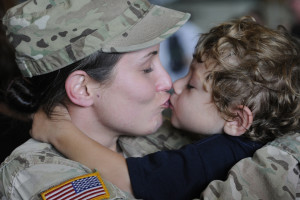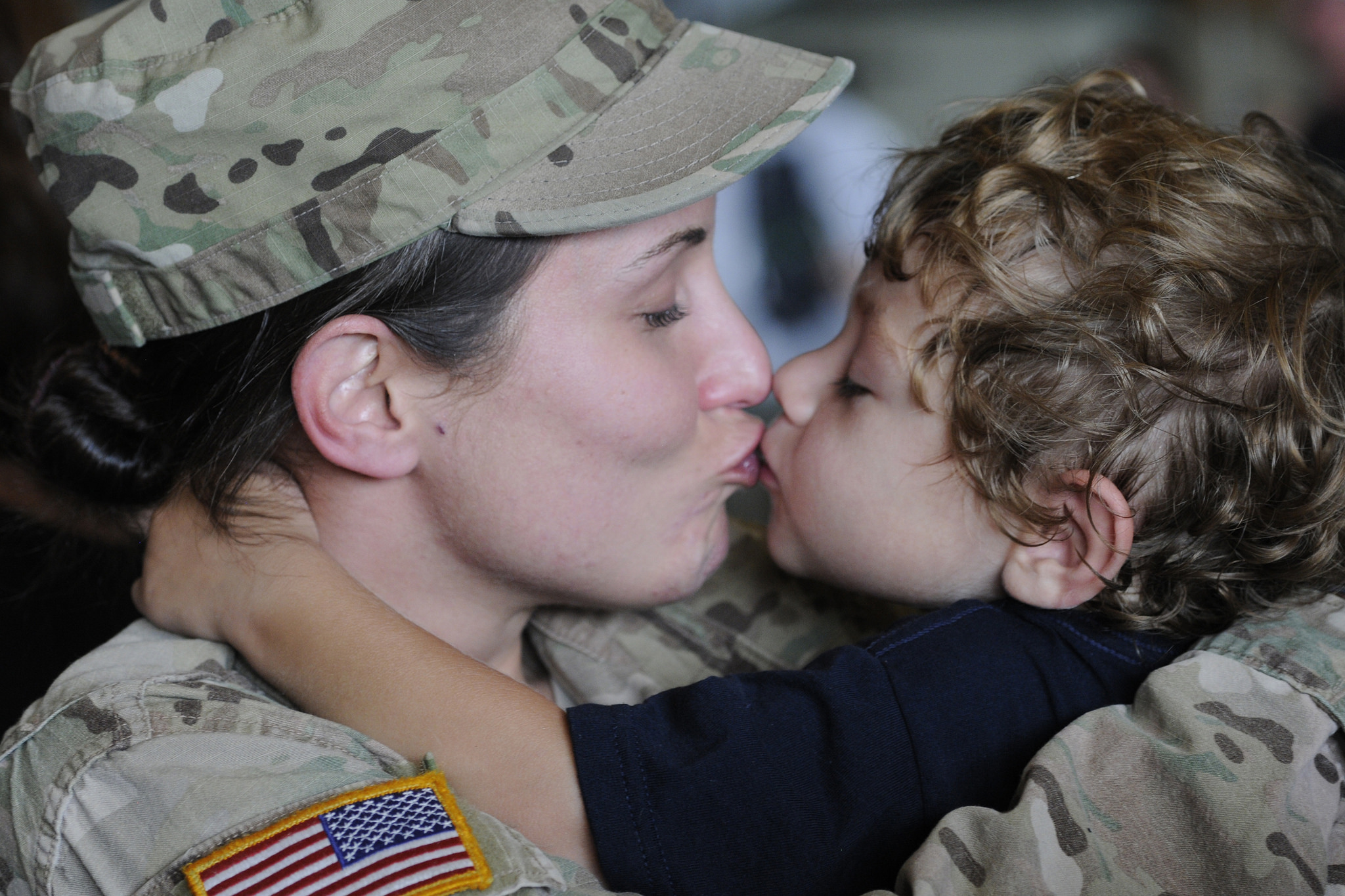 Let’s stop all the hoopla about women in combat, sexual harassment, transgender rights, gay rights and all of the other societal issues and concerns that we face today in the military and focus on the readiness of the Army. Granted, all of these issues are extremely important and we should not ignore these very important societal concerns. What I am advocating is to focus on the individual soldier and his or her readiness to fight and win our nation’s wars.
Let’s stop all the hoopla about women in combat, sexual harassment, transgender rights, gay rights and all of the other societal issues and concerns that we face today in the military and focus on the readiness of the Army. Granted, all of these issues are extremely important and we should not ignore these very important societal concerns. What I am advocating is to focus on the individual soldier and his or her readiness to fight and win our nation’s wars.
I have read more articles about women in infantry, transgender rights, gay rights and societal concerns than I have read about the readiness of the Army. Open a newspaper or browse the internet and you will see these issues take front and center stage. Again, these are very important issues, but with modern-day militaries engaging in limited wars and hybrid warfare, we need to focus our attention on readiness matters to be prepared to engage them. Granted, some would argue that these concerns are readiness matters and I 100 percent agree. But what I am arguing is that we need to focus on the budget of our military, the downsizing that our forces are facing, and the actions of states within regions that we consider of strategic value first.
Societal concerns will always be there. These will not change. It is a common assumption that as long as you recognize that a culture has shared understandings and as the culture evolves overtime, the shared understandings that everyone that is part of that culture agrees to will change, then the argument can be made the societal concerns will always be there. Whether that is allowing females into the infantry or allowing transgender equal rights within the military, as we move forward as a culture within the United States, our military will also move and evolve, thus our societal concerns will remain and need to be addressed. By addressing readiness of soldiers, in particular preparing for combat with the right weapons systems, adequate sustainment processes, and a clear strategy, within a unified command, we can be successful. Our attention should focus on the individual soldier’s training needs and equipping needs first and foremost to accomplish our mission of winning our great nations wars.
I have read more articles about women in infantry, transgender rights, gay rights and societal concerns than I have read about the readiness of the Army.
To do this first task of addressing readiness, Congress needs to approve a long term defense budget. In my twenty three year career in the U.S. Army I cannot recall a period that we have been through in the last 10 years with so many government shutdowns or threat of government shutdowns due to budget battles in Congress. These budget battles affect real people at the individual level. I can recall serving in an Aviation Unit in which due to budget constraints we had authorized that pilots’ simulation time would count as actual flight time, provided it was signed off by the Commander of the unit. We simply did not have enough budget to cover the costs of authorizing pilots to fly helicopters and gain the valuable training experience required. The pilots still flew some training flights, don’t get me wrong, but it was so limited that it truly affected the readiness of the unit. It is these types of situations that need to make the front page of newspapers, not the latest societal concerns. I think we would all agree that this type of readiness issue could in the long term affect a unit’s combat capability and effectiveness.
Secondly, we need to focus our attention on the downsizing of the Army. If we recognize that the U.S. Army’s main focus is winning land battles (Marines are also responsible for this as well) then we need to ensure that we have an adequate enough force to meet this mission. I would wager that 420,000 troops would not be enough to fight two wars on two fronts. If one of our strategies is to have the capability to fight two wars simultaneously then this is not near enough. If we look at the Operation Iraqi Freedom and Operation Enduring Freedom Campaigns the U.S. Army swelled up to end strength of roughly 557,000 Soldiers, of which at least 383,000 had deployed according to a 2010 RAND report. Even with these numbers the Army still had soldiers complete multiple deployments.
I myself completed three deployments during this period. If the Army struggled with its commitments on two fronts with a population of 557,000 soldiers available, how is it going to meet the needs of two wars with only 420,000? A further examination of these numbers indicates an end strength of 420,000 soldiers would leave only 37,000 soldiers in the U.S. to address security issues or another major war if it were to occur. Granted we do have a reserve force of 500,000 and some change to address some of these issues, but even during the latest wars in Iraq and Afghanistan, we were employing our National Guard and Reserve forces into the fight. Our focus should not be downsizing but maintaining a large enough pool of soldiers to fight on two fronts. Granted, the U.S. is facing unprecedented budget issues and constraints and needs to make changes in order to have a balanced budget. [But to balance the budget, the military should not be the first item on the chopping block. Our government needs to focus on creating a defense budget that is both innovative [and sustainable into the near future, which ensures that Soldiers have the right equipment, training and sustainment to allow them to win our nations wars.
Finally, we need to continue to focus our attention on our international matters abroad. We need to keep an eye on limited wars within the Middle East and the Pacific Region. The U.S. should look at how we can equip, train and maintain a ready fighting force to address these issues. By focusing on readiness at each level within our military, the U.S. will be able to maintain a deterrent that is both credible and legitimate that nations will respond to. This requires that we focus our attention on the intentions of Russia, China, Iran and North Korea. I am not advocating we have hostilities with these countries, the U.S. should have a balanced foreign policy that addresses the limited wars that are being waged there and a clear strategy of equipping and training our forces to address these issues.
At the beginning of this article I advocated our need to focus on readiness. Societal concerns will always be there and we should always be addressing them. If they are on the table as the main course, then readiness also needs to be on the table of issues and concerns for the Military as a complimentary course. I am really arguing that readiness should be the main course and societal concerns should be the complimentary course. At the end of the day, what makes our country great is that we as a nation have the ability to focus on both, but only if we will try.


If the focus of the force is on “societal” issues it will by definition not be on readiness. The history of women in the armed forces has shown, very conclusively, that in any contest between social equity – and the perception thereof – and military standards, the latter will lose out. That’s because the assumptions about human nature, about gender, about sexuality, that drive the “equity” push are in many cases at odds with objective reality, and therefore with readiness. If your goal is “inclusion” the inconvenient truth that the top 2-3% of women only measure up, physically, to the average man, creates major problems. So, while I applaud the author’s desire to focus on military readiness at the level of the individual soldier, it cannot be separated from these social issues, and neither can the readiness of the military collectively either.
You are absolutely right and I appreciate your comment. Thanks for your honest and candid feedback, it is discussions like these, that professionals need to engage in to make our Military better. Thank you for taking the time to read my article.
I concur with ADM64. The purpose of the military is to enforce foreign policy when diplomacy is just not enough. You have to be able to successfully accomplish the mission and have the right personnel to do so. The Mission is the first priority. All other things are secondary. It would be remiss to fail to point out that there are certain physical realities and that spending hard to come by dollars for very little return is a waste of the taxpayers money and scarce resources. This entire women in infantry and SOF units is not about the success of the the Army, Navy, Air Force or Marine Corps; it is about career ascension and individual success. We need to be wiser with our budgets, adhere to our Mission, and not cave in to the popular, flavor-of-the-month, cause de jour mentality. This ain’t Tiddly Winks people.
Great feedback, I agree, we are in for a challenging future with many changes coming. I like your comment “this aint tiddly winks people”, so true!
Unlike ADM 64 and the Usual suspect, I remember, that the Army integrated in 1948, when african american recruits had higher test scores than white recruits. Likewise, the Army started integrating women into various branches such as Military Intelligence at the start of the Volunteer Army following the end of the draft and Viet Nam. Again, the females had higher test scores than males.
But, like them, I doubt anyone will benefit from the attempted integration of women into the Infantry platoons or Special Ops A teams. But, surely woman can serve well at the battalion or brigade level.
An unrelated note, Mr. Gouge. I shop thrift stores, and came across a presentation bible to Fourth Classmen at West Point with the name John A Goudge imprinted on it. It is still in the box and in new condition. Could this be yours? If so, I would like to return it to you if you wold care to have it. Please respond jduray2014@gmail.com. Thank you.